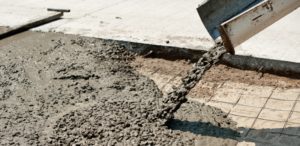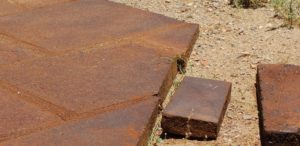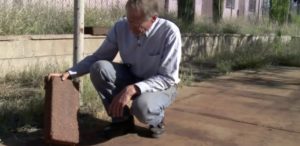This cement alternative absorbs CO2 like a sponge
Concrete has long been the go-to material for durable, robust and long-wearing construction. You see it absolutely everywhere – highways, bridges, buildings and sidewalks – and around 4 billion tons of cement are produced every year, having huge implications for our environment. But what if there was something stronger, more flexible, less expensive and carbon-negative to work with, acting as a sponge to literally absorb C02? Well, there is: Ferrock.
David Stone is the brains behind a new patented concrete technology known as Ferrock, based on iron carbonate and incorporating largely recycled materials to produce (around 95%)! It’s showing promising signs as an alternative to concrete and a far greener building material.
Concrete or Ferrock
While the words “cement” and “concrete” are often used interchangeably, cement is actually the product that binds concrete and they are produced separately in a process that results in huge carbon emissions. It’s been estimated that for every 1000kg of cement we produce, around 900kg of C02 is emitted into the environment and cement alone is responsible for around 5% of the world’s overall C02 emissions. One of the main reasons is that cement requires an extremely high heat to process the limestone used to make it, at a staggering 2,800 degrees Fahrenheit!
But despite the environmental consequences, concrete remains a hugely popular building material around the world for its strength and durability.
ferrock3
It was while David Stone was doing his PhD in environmental chemistry at the University of Arizona in Tucson when a failed experiment uncovered a unique material. While looking into how to keep iron from rusting and hardening up, the material that inspired Ferrock was unintentionally created. Stone initially discarded this incredibly hard material, then suddenly realized it might have a useful purpose as a more environmentally friendly, yet robust, alternative to cement. In the experiments which followed, his aim was to find a material that could be mixed and poured just like cement and with the same strength and versatility that concrete offers.
During the initial development stage of Ferrock, Stone connected with the Tohono O’odham Nation, – a Native American reservation in Southern Arizona whose community assisted him in sourcing silica which would be added to the mix. The Environmental Protection Agency (impressed with his idea) gave more than $200,000 in grants to build demonstration projects using Ferrock and employing local tribe members.
Ferrock
The name Ferrock is a reflection of its composition – largely iron-rich ferrous rock. It’s actually created from waste steel dust which is normally discarded from industrial processes and silica from ground up glass. The iron within the steel dust reacts with C02 and rusts to form iron carbonate. It’s this that is fused into the matrix of Ferrock and, like concrete, after it’s dried, it cannot be melted back into a liquid form but retains its hard, rock-like qualities.
What are the advantages?
Compared to Portland cement (made from chalk and clay and resembling Portland stone in color), which is one of the leading types in use throughout the world today, Ferrock is actually five times stronger. It can withstand more compression before breaking and is far more flexible, meaning it could potentially resist the earth movements caused by seismic activity or industrial processes. One of the unique properties of Ferrock is that it becomes even stronger in salt water environments, making it ideal for marine-based construction projects. And rather than emitting large amounts of C02 as it dries, Ferrock actually absorbs and binds it! This results in a carbon-negative process that actually helps to trap greenhouse gases.
Ferrock
While the material composition and implementation techniques have already been tested at the University of Arizona, IronKast is currently in the process of commercializing the Ferrock patent and implementing it into pilot projects within marine environments.
It’s carbon-negative qualities are a dramatic turn-around from the carbon release that has so long been associated with construction and there’s potential there to undo some of the widespread damage that has been done in the last couple of hundred years. But there’s skepticism from the cement industry that while Ferrock could be great for niche projects, it isn’t practical for large-scale industrial use, like highways for example. If steel dust suddenly goes from being a “waste” material to a highly-prized building resource, it’s price will increase exponentially and the costs of producing Ferrock may limit its application.
But Stone is hoping that as the world starts looking towards carbon-neutral or carbon-negative building materials, Ferrock is where they will turn. He says: “It has taken years to get just a basic understanding of the chemistry involved…but this shouldn’t be surprising since scientists are still trying to figure out Portland cement and they’ve had 200 years. I am in this for the long haul…. in this era of global warming, unsustainable processes like cement manufacture will have to give way to greener alternatives….when the time comes and the world wants to build with new materials that are carbon-neutral or carbon-negative, I will be able to step forward and say, yes, I have such a material.”
Even if Ferrock is not the exact answer or a cost-effective solution in the long-term future, it’s a promising starting point for developing smarter technologies that address our insatiable hunger for development and the devastating result it’s having on our environment.
Video: https://www.youtube.com/user/PBSNewsHour
Text and images: https://buildabroad.org/2016/09/27/ferrock/



